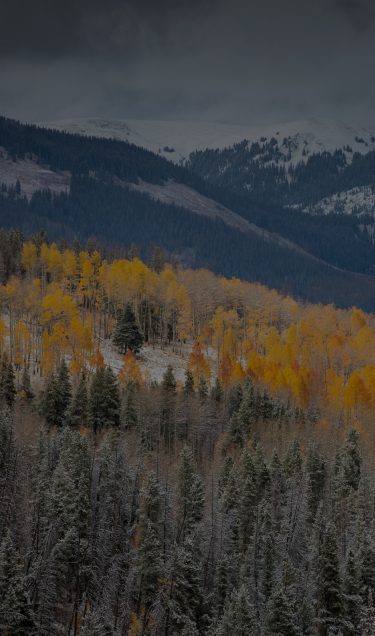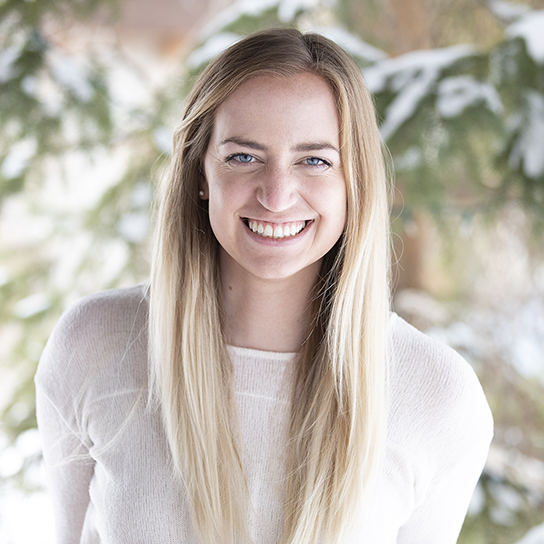Expert Roundtable Discussion on trauma featuring:
- Abe Antine, MSW, LCSW – Clinical Director
- Maria Talamo, MA, RN, NEA-BC, EDAC, FACHE – Chief Operations Officer
- Ryan Drzewiecki, PsyD, LP – Director of Psychology, Clinical Documentation, and Informatics
- Ryan Soave – Associate Clinical Director & Program Director of APN Coaching
Video Transcript
Suicide Rate in the Vail Valley
Abe Antine: Who wants to start this conversation about the suicide rate being so disproportionate to the rest of the country?
Ryan Soave: I think it’s alarming, you know? It’s shocking to see the statistics around it – in an affluent community, in a very beautiful setting.
How to Help With Existential Questions
Maria talked earlier about people having these existential questions. I think that’s something that expands outside of here to people who are questioning what their meaning in life or their purpose is.
There are all kinds of theories or reasons why the suicide rate is so much higher in an area like this. I don’t really know or want to speculate on that right now. I really want to look at the solution and how can we be supportive. How can we help point people in the direction of healing?
One of the ways we’re doing that is offering workshops and outpatient services that will be more expansive as we grow. Not everybody needs to spend this significant amount of time and money for treatment. But we’re going to be offering ways to integrate mental health into the community. Not only that, but we are also building a team (and have built a team) of people with a wealth of knowledge in this area and around the country to be a referral point for folks. We can help to assess and see what it is that folks need.
Crisis Comes in Different Packages
Sometimes people are in a crisis period that hasn’t pervaded their entire life. It seems like everything is collapsing, and they may just need to be able to see things through a new lens. Sometimes people have been struggling with something for a very, very long time. Those two people may need very different services.
Dreams Falling Short
Abe Antine: Talking to local therapists, one of the main things I’ve heard people say they’ve heard from clients is, “I moved here and gave up everything to be out here. This was my dream to be in the mountains, to be able to do all these things.” Then they find themselves depressed. People talk about being in higher elevation, there are lower serotonin levels which are responsible for the mood. Higher dopamine levels are about risk-taking and adventure-seeking and all that other stuff.
“If I can’t be happy here, there must be something really wrong”
People think, “If I can’t be happy here, there must be something really wrong with me. Because where else could I possibly be happy?” I think there’s just not enough awareness. If there could be billboards here saying, “It’s okay to be depressed. You’re not alone,” or “There are a lot of people that are depressed here,” or something.
Increasing Mental Health Awareness
Ryan Soave: It’s funny. In Edwards, as I’ve driven in a few times, I’ve seen some little signs that say, “You’re not alone. Don’t give up.”
Stressors Affect Everyone Differently, Why?
I think it’s also really important not to generalize. This isn’t about everybody that comes to an area like this. This is, “What is your history?” This is a question we get asked all the time: why do traumas or stressors affect people in different ways? The reality is that people have different histories. They have different shapings that have set them up to react to events in a certain way.
An Internal Crisis Needs an Internal Solution
If you just move to an area to feel better, you’re relying on something external to solve some sort of internal crisis or issue, and that never works for more than a little bit of time. So it’s really about what’s been going on over the life span that has led to you feeling this way here.
Learning to Feel Bad
Like you were just alluding to, sometimes people don’t allow themselves to feel bad in places where they think they should feel good. It can be hard to wake up in places and think, “I should be grateful for this. I should be.” In reality, you can be grateful and happy and also feel bad. A lot of the work that we do as clinicians and as a team is to help people learn how to feel bad.
Breaking and Making Attachments
Maria Talamo: The other thing is that when you come here, you’re letting go of attachments someplace else. And sometimes people don’t realize how important those attachments are to them (or were to them) until they’re not there anymore or until they miss familiar people or places. So, you either have to have a way to go home from time to time to maintain those attachments and your mental health or you have to form new attachments out here. That means getting involved in the community, making friends, and forming relationships.
That can be a little tricky here. It takes time, focus, and moving in deliberation. In other words, you’ve got to really make it a conscious goal that it’s important to form attachments here or you’re not going to be happy.
We’re human beings. We’re herd animals. We’re like horses. We are not happy if we’re not with each other. We’re not happy unless we’re forming attachments, friendships, acquaintanceships, and love. Without it, life doesn’t have meaning, and it can be depressing. So people have to be working consciously to make that happen and constantly moving forward, or you could get depressed out here, you really could. Even though it’s breathtakingly beautiful, it could be desolate if you are not working on forming relationships and attachments.
The Motivation to Move
Ryan Drzewiecki: The first thing that was said to me after moving in during the middle of the night was by my neighbor. In the morning I woke up, the neighbor was outside, and he said, “So what is it?” I asked, “What do you mean?” He said, “Everybody moves up here because they are running away from something or because they’re looking for something. So which is it?” That just stuck with me. It makes me think about the Valley and the way that people in the Valley see themselves.
Coming Alongside Vail Valley
I think historically, there has been either a lack of awareness or sort of a blind eye turned to the mental health crisis. But right now, there are some fantastic initiatives and some very talented people working on addressing this problem. I’m excited for us to be a part of that and contribute to that.
Ryan Soave: Yeah, and really good clinical treatment does not involve a clinician telling a client what their problem is. Really good treatment has us listening and witnessing that person and understanding what they see as the problem. We have to be able to support them in finding the solution that fits for them.
I would say that’s the same for addressing this issue. The last thing we want to be is the new guy on the block coming in and telling everybody here what the problem is. We want to be able to listen, hold space, and help find solutions. Those solutions may be different for every single individual. And that’s what is really important about the integrated care model that we’re talking about. We need to meet each person where they are. An addict is not an addict is not an addict. A trauma survivor is not a trauma survivor is not a trauma survivor.
A Collaborative Path to Healing
People come to treatment for many different things, and they’re going to find paths to healing in many different ways. It’s not often going to look like the way I think it should look or the way Abe or Ryan or Maria think it should look. It’s gotta be a way that’s collaborative and best for the client and their family system.
I would say that’s the same for the community that we’re in. We want to be a resource. We want to be a source of solution and healing.
Continuing to Grow
Abe Antine: I really enjoyed this morning. I know we had to get up a little early to have this conversation, but this was great. Getting to hear all your points of view has opened my eyes to some things. I think we should do this again. I definitely think we need to have more discussions like this to see how we can better ourselves and APN Lodge and help the community.




